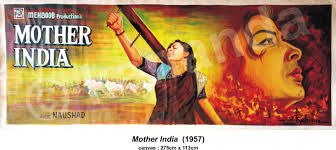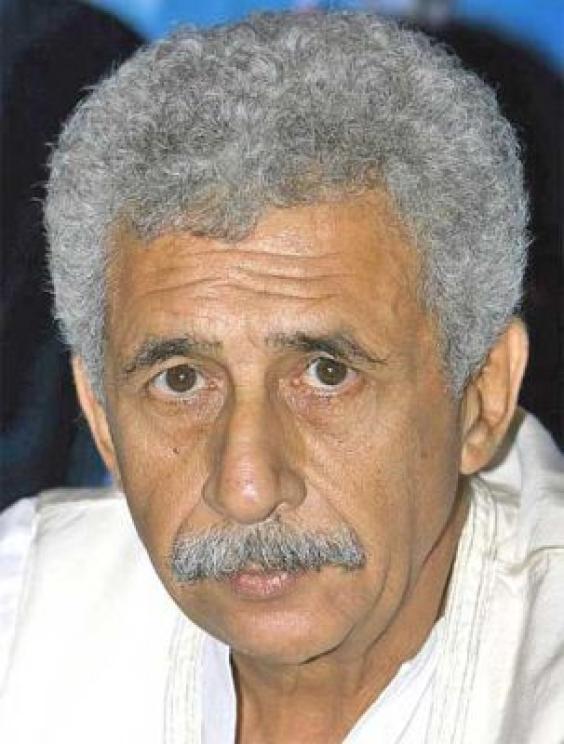Rise of The HIndies
A Look at New Age Hindi Cinema
Independent films: A film made without the use of studio money. It is made at a relatively low budget, approximately at $4 million.Known as Indie films.


Anurag Kashyap, the new face of Indie Movies in Bollywood. Director of Dev D and The Gangs of Wasseypur saga.
This is a close definition of what an independent film generally alludes to. In Bollywood however an Indie film refers to a movie that speaks on unorthodox subjects that pertain to reality. Indie films or HIndie films as they are known in India, can be made from at most 20 crore (200 million) rupees by even the most popular production houses as long as the subject matter is relevant to society. These films do not have the general tropes of item numbers or action set pieces that come with the generic template of Bollywood movies. Even A-List actors make a claim to at least produce if not star in such enlightening, artistic and creative pieces.So let's look through the historic climb of HIndie films (or as they were known; Art house cinema and Parallel cinema).

To full understand the rise of Parallel and subject heavy cinema it is important to look through the history of the changing Bollywood themes. When people are asked about Bollywood, most think of the generic love stories with out of the blue songs and physics defying action. Others take it in positive light and think Bollywood began with catchy tunes and mass entertainers with larger than life heroes and their gorgeous love interests. Sure Hindi cinema is all this, and has been so for quite a long time, but Hindi cinema did not necessarily begin in such fashion.
Legendary actors Raj Kapoor and Nargis from Awara (1951), Awara means tramp/hobo alluding to Raj Kapoor's character. A movie based on social issues of the poor side of India during it's urbanization. Even the romantic story is unglamorous compared to current Bollywood norms.
Hindi cinema began in 1913 (yes Hindi Cinema has crossed a 100 years), with silent feature films including the famous Raja Harishchandra (1913) by well known auteur Dadasaheb Phalke, in those years silent films would be the norm. Talkies then came along in 1930's but a major turn for India was soon to arrive. With India's Independence Movement churning a success, the period from 1940's up to 1960's would produce a colossal amount of films and would be tagged as Hindi Cinema's Golden Period. This was the wind of change that would create Bollywood and signify the era of actors becoming stars and larger than life people.
The 1940's generally saw movies that tried to steep into social issues considerate to the populace that witnessed the rise of urban India post British rule. Legends such as Guru Dutt and Raj Kapoor would be the leaders of this dominion. Mainstream Hindi cinema was also established with this, and contrary to popular belief it did not start with song and dance musicals but rather magnum opus movies based on Drama and hints of Romance. Movies included would be Mother India (1957) and Mughal-E-Azam (1960).

This is then where the Indies actually stepped in, back then considered Art-House cinema. These were in true form to the definition as the movies were made in low budgets. India is a country with multiple languages and as such there is Hindi cinema (Hindi being India's primary language) as it's stalwart, but there is also other cinema such as Tamil, Bengali, Bhojpuri. It was Bengali cinema's quality of film that brought about The Art-House Film Movement. Movies of this nature would soon gain critical and commercial success allowing the birthand growth of The Indian New Wave. During this point Indian films would be showcased at the Grand Cannes Film Festival and would vigorously compete for The Cannes Palme d'Or.
Commercial cinema then went through a boom in late 1960's through the 1970's. Cinema halls were filled with the public cheering romantic and action heroes. During this time art-house cinema struggled but survived thanks to directors like Shyam Benegal, Ketan Mehta etc. Still it was pushed under the heel of promoting commercial cinema, thus things took a turn for the worse for the Indies.In a swift moment art-house films had transitioned successfully from Bengal to Hindi cinema and in the same swift moment it had been buried underneath a sliver of politics that caused Film Financing Corporation to shed light on mass entertainer rather than though provoking films. Bollywood never looked the same and never looked back.
In the next edition of Rise Of The HIndies, I will discuss the ongoing art house cinema and it's pillars of acting; Naseeruddin Shah, Smita Patil, Farooq Sheikh, Om Puri, Amol Parlekar and Shabana Azmi. I will also discuss it's non existence through the 90's and early 2000's Khan Era.


To full understand the rise of Parallel and subject heavy cinema it is important to look through the history of the changing Bollywood themes. When people are asked about Bollywood, most think of the generic love stories with out of the blue songs and physics defying action. Others take it in positive light and think Bollywood began with catchy tunes and mass entertainers with larger than life heroes and their gorgeous love interests. Sure Hindi cinema is all this, and has been so for quite a long time, but Hindi cinema did not necessarily begin in such fashion.
Legendary actors Raj Kapoor and Nargis from Awara (1951), Awara means tramp/hobo alluding to Raj Kapoor's character. A movie based on social issues of the poor side of India during it's urbanization. Even the romantic story is unglamorous compared to current Bollywood norms.
Hindi cinema began in 1913 (yes Hindi Cinema has crossed a 100 years), with silent feature films including the famous Raja Harishchandra (1913) by well known auteur Dadasaheb Phalke, in those years silent films would be the norm. Talkies then came along in 1930's but a major turn for India was soon to arrive. With India's Independence Movement churning a success, the period from 1940's up to 1960's would produce a colossal amount of films and would be tagged as Hindi Cinema's Golden Period. This was the wind of change that would create Bollywood and signify the era of actors becoming stars and larger than life people.
The 1940's generally saw movies that tried to steep into social issues considerate to the populace that witnessed the rise of urban India post British rule. Legends such as Guru Dutt and Raj Kapoor would be the leaders of this dominion. Mainstream Hindi cinema was also established with this, and contrary to popular belief it did not start with song and dance musicals but rather magnum opus movies based on Drama and hints of Romance. Movies included would be Mother India (1957) and Mughal-E-Azam (1960).
Mother India (1957). One of the few Indian films nominated for the Best Foreign Picture Oscar.
This is then where the Indies actually stepped in, back then considered Art-House cinema. These were in true form to the definition as the movies were made in low budgets. India is a country with multiple languages and as such there is Hindi cinema (Hindi being India's primary language) as it's stalwart, but there is also other cinema such as Tamil, Bengali, Bhojpuri. It was Bengali cinema's quality of film that brought about The Art-House Film Movement. Movies of this nature would soon gain critical and commercial success allowing the birthand growth of The Indian New Wave. During this point Indian films would be showcased at the Grand Cannes Film Festival and would vigorously compete for The Cannes Palme d'Or.
Commercial cinema then went through a boom in late 1960's through the 1970's. Cinema halls were filled with the public cheering romantic and action heroes. During this time art-house cinema struggled but survived thanks to directors like Shyam Benegal, Ketan Mehta etc. Still it was pushed under the heel of promoting commercial cinema, thus things took a turn for the worse for the Indies.In a swift moment art-house films had transitioned successfully from Bengal to Hindi cinema and in the same swift moment it had been buried underneath a sliver of politics that caused Film Financing Corporation to shed light on mass entertainer rather than though provoking films. Bollywood never looked the same and never looked back.
In the next edition of Rise Of The HIndies, I will discuss the ongoing art house cinema and it's pillars of acting; Naseeruddin Shah, Smita Patil, Farooq Sheikh, Om Puri, Amol Parlekar and Shabana Azmi. I will also discuss it's non existence through the 90's and early 2000's Khan Era.

Naseeruddin Shah, one of India's greatest actors. He was a top choice for Parallel cinema directors during the heady days of mainstream blockbusters. Also quite a common choice for Hollywood directors in a role demanding culture and sophisticated Indian presence.
'Nuff Said
Aneesh Raikundalia

No comments:
Post a Comment